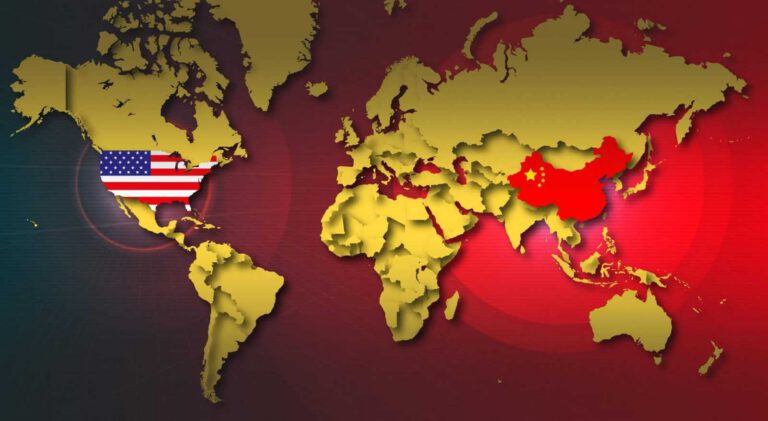For a lot of people — economists, political leaders, and investors alike — the question “When will the Chinese economy overtake the American one?” is the most exciting riddle of the XXI century.
Though Pax Americana won’t cease to exist once the gross domestic product of the United States slips to second place, it will probably lay the foundation for a new era of Sinic global dominance, both economic and political.
There is no consensus among scientists on when the economy of China will become the largest in terms of GDP. It can well happen in the coming years, in the next decade or never. China’s ascension to economic Olympus can be hindered by so many factors (including the performance of the US economy), that the precise moment can hardly be predicted. However, by extrapolating the existing growth and adjusting them to ever-changing macroeconomic conditions it is possible to achieve certain success in the field of economic forecasting. A recent research carried out by PwC gives an insight into the most possible scenario.

China growth prospects
To tell when the named ‘overtake’ will take place one should know two main figures: economic growth rate prospects for China and the US.
According to Price Waterhouse Coopers, America has less than 13 years to enjoy its dominant economic position. Before 2030 (or even earlier) China will overtake the US in term of GDP. By 2050 the United States will move even further, being pushed to the third place by India. What is the major growth factor behind the ascension of the developing countries? Experts believe that growing productivity will be responsible for the country’s economic growth in the coming decades.

At this point of time, further liberalization of China’s economy and privatization of state-owned enterprises is believed to contribute a big deal to growth momentum. The Chinese Communist Party is busy maintaining social cohesion and neutralizing growing income inequality, an inevitable satellite of catching-up development.
Though China has performed considerably worse in term of GDP growth rates during 2016 and 2017 than in the previous years, it is still better than all Western economies. From 1979 until 2010, China’s average annual GDP growth was 9.91%. In 2016 it dropped to 6.7, while slightly recovering to 6.9 in the beginning of 2017.

American dream is not yet over
The American economy should not be discarded just yet. Trump’s fiscal reforms and economic initiatives, launched with the sole purpose of kick-starting the US economy once again, can contribute to America’s greatness. At least, from an economic point of view.
The unemployment is close to natural and expected to drop even further, to 4.5% in 2017. According to the most accurate estimates, inflation will not exceed 2%. These parameters correspond to a healthy economic environment and stimulate further growth. The United States’ GDP per capita is still 7 times greater than that of China (and 3.7 times if calculated by PPP).

Over the past 30 years, the US has grown at an annual average rate of 2.4%, which is not bad for an already developed country. The World Bank, the IMF, and the UN all agree that the American economy will grow at an annual rate of 2% in the coming years.

Possible headwinds
An upcoming financial crisis, predicted by world-renowned economists and market analysts, can very well be expected. It is not clear now how will a major disruption affect the growth rates of the two economies.
Downgraded by Moody’s for the first time since 1989 the national debt of an Asian giant is a reflection of structural imbalances in its economy. The Central government, who still plays a key role in maintaining fast-paced development, may be relying too much on market intervention and command economy elements.
Maintaining the pace of economic growth is essential for the communist government as it helps to avoid political instability and criticism from within the country. Chinese consumers take economic growth for granted. The general public may turn dissatisfied with the CCP’s leading role in the national politics once the growth rate starts to shrink. It is hard to tell whether the national economy will be able to sustain its high single digit growth rate throughout the coming years.
Conclusion
Should the United States and Western traders be afraid of the ever-growing prosperity in th Asian region? Yes and no. With economic development comes political power (the kind the United States executed since the 19th century). And the American establishment hardly wants to take someone else’s opinion into account when making important decisions. This is what political elites think about when they promote the ‘Chinese threat’ rhetoric. In this regard, economic development of the world’s most populous country makes the US worry.
General economy and market participants, on the contrary, can benefit a great deal from Chinese economic expansion. The bigger the global market, the higher the demand for US-manufactured goods and services. It doesn’t come without a strain, though. Some United States-based companies may go out of business, run down by the Chinese competitors.

